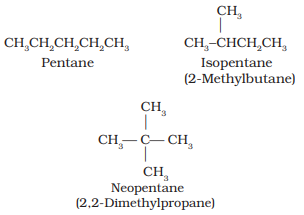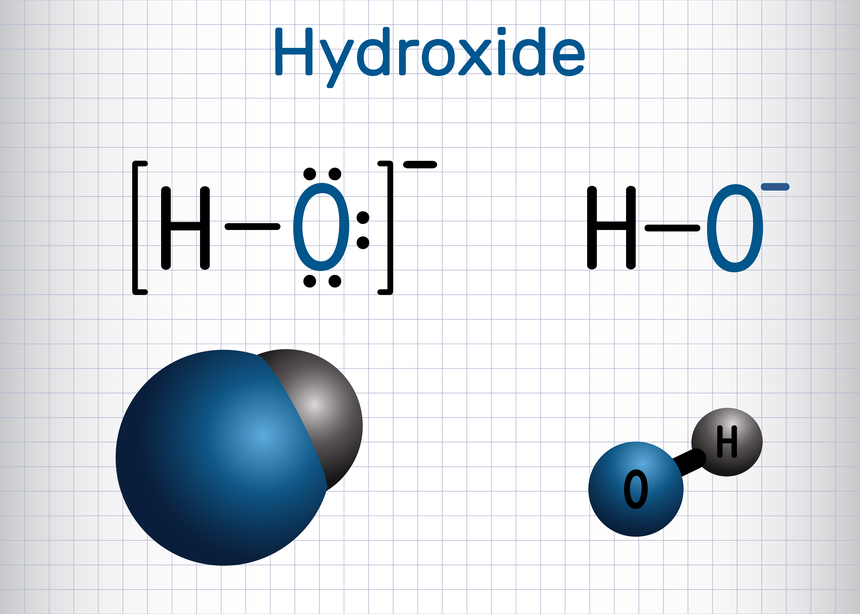Organic Chemistry - Some Basic Principles and Techniques - Notes, Topics, Formula, Books, FAQs
This is the beginning of organic chemistry. In this chapter, we study the basic concepts like IUPAC nomenclature, isomerism, inductive effect, resonance effect. There are some reagents as well like nucleophile and electrophile that comes into picture only during the time of organic reactions. In isomerism, you will study the detailed analysis of isomerism and its various types. There are many organic compounds that have the same chemical formula but they differ in their physical properties. Besides, you will also study the benzene compounds and their substituents.
NEET 2025: Mock Test Series | Syllabus | High Scoring Topics | PYQs
JEE Main: Study Materials | High Scoring Topics | Preparation Guide
JEE Main: Syllabus | Sample Papers | Mock Tests | PYQs
- Important Topics of Some Basic Principles of Organic Chemistry
- Overview of the Chapter - Some Basic Principles of Organic Chemistry
- Structural representations of Organic Compounds
- Classification of Organic Compounds
- Nomenclature of substituted compounds
- Isomerism
- Fundamental Concepts in Organic Chemistry
- How to prepare for Some Basic Principles of Organic Chemistry
- Prescribed Books

Important Topics of Some Basic Principles of Organic Chemistry
Organic Compounds - Classification of Organic Compounds
Organic compounds are primarily classified into open-chain compounds (aliphatic), closed-chain compounds (cyclic), and aromatic compounds. Organic compounds are further classified into into saturated, unsaturated, and functionalized compounds based on their bonding and structural features.
Functional Group
A functional group is a specific group of atoms in a molecule that determines its chemical properties. Examples include hydroxyl (-OH), carboxyl (-COOH), and amino (-NH₂) groups. Identifying functional groups is critical for understanding reactions and nomenclature.
Homologous Series
A homologous series is a group of organic compounds with the same functional group and a general formula, having a difference of CH₂ unit. Members of homologous series show a gradual change in physical properties but similar chemical behaviour.
IUPAC Nomenclature of Organic Chemistry
The IUPAC system provides a standardized way to name organic compounds based on their structure. IUPAC nomenclature of Organic chemistry provides a clarity in scientific communication. It involves identifying the parent chain, functional groups, and substituents.
Isomerism
Isomerism is a phenomena when compounds have the same molecular formula but different structures or spatial arrangements. It includes structural isomerism (e.g., chain, functional) and stereoisomerism (e.g., geometrical, optical).
Organic Chemistry
Organic chemistry is the study of carbon-containing compounds and their reactions. It includes natural and synthetic compounds, ranging from hydrocarbons to biomolecules like proteins and nucleic acids.
Carbocations
Carbocations are positively charged carbon species with a deficiency of electrons. Stability of carbocations is influenced by inductive, hyperconjugation, and resonance effects, and they play a key role in many organic reactions.
Carbanions
Carbanions are negatively charged carbon species with an excess of electrons. Carbanions are highly reactive and mostly act as nucleophiles in organic reactions.
Alkyl Free Radicals
Alkyl free radicals are neutral species with an unpaired electron on a carbon atom. Their stability of alkyl free radicals depends on hyperconjugation and resonance effects, and they are intermediates in radical reactions.
Nucleophiles and Electrophiles
Nucleophiles are electron rich species that donate electrons and electrophiles are electron deficient species that accept electrons. Nucleophiles and electrophiles interactions drive most organic reactions.
Inductive Effect
The inductive effect refers to the polarization of sigma bonds due to electronegativity differences. It influences the stability of intermediates like carbocations and acids' strengths.
Electromeric Effect
The electromeric effect is the temporary shifting of π-electrons within a molecule in the presence of an attacking reagent, crucial in explaining reaction mechanisms.
Mesomeric or Resonance Effect
The resonance effect involves the delocalization of electrons in conjugated systems, stabilizing the molecule. Mesomeric or Resonance effect explains the enhanced stability of aromatic compounds and intermediates.
Hyperconjugation
Hyperconjugation is the delocalization of sigma electrons adjacent to a positively charged carbon which provides stability to carbocations and contributing to alkene stability.
Tautomerism
Tautomerism is a reversible chemical phenomenon where compounds interconvert between isomeric forms which involves keto-enol transformations. It affects reactivity and stability.
Purification of Organic Compounds
Methods for the Purification of Organic compounds include distillation, crystallization, and chromatography, which separate organic compounds based on their physical and chemical properties.
Qualitative Analysis of Organic Compounds
Qualitative analysis identifies elements (C, H, O, N, S, halogens) in organic compounds. Techniques like Lassaigne’s test and sodium fusion test are commonly used for the Qualitative analysis of organic compounds.
Lassaigne’s Test - Test for Nitrogen, Sulphur, Halogens
Lassaigne’s test involves fusing an organic compound with sodium to detect elements like nitrogen, sulfur, and halogens through characteristic reactions.
Duma’s Method
Duma’s method is used to determine the nitrogen content in organic compounds by converting nitrogen into molecular nitrogen or ammonia for quantitative analysis. Duma’s method is an important topic for exams like NEET.
Kjeldahl’s Method
Kjeldahl’s method estimates nitrogen in organic compounds by converting nitrogen into ammonium sulfate which is followed by titration with a standard acid.
Carius Method
The Carius method quantifies halogens, sulfur, and phosphorus by oxidizing the organic compound and analyzing the resultant inorganic precipitates.
Salt Analysis
Salt analysis systematically identifies cations and anions in an inorganic salt through confirmatory tests and group-wise analysis.
Systematic Analysis of Anions
Anion analysis involves tests for acidic radicals like chloride, sulfate, nitrate, and carbonate using specific reagents and precipitation reactions. Systematic analysis of anions is an important aspect of quantitative analysis.
Systematic Analysis of Cations
Cation analysis of cations identifies basic radicals (e.g., Na⁺, Fe³⁺) using flame tests, precipitation, and selective reactions based on solubility and reactivity.
| Also read, |
Overview of the Chapter - Some Basic Principles of Organic Chemistry
In this chapter, you will study the basic concepts related to organic chemistry. First, you will learn the reason due to which carbon is able to form a large number of compounds. Besides, you will learn the rules to name these organic compounds, isomerism, resonance effect, inductive effect, etc. Besides, you will also learn important tips and the best book to prepare this in the most efficient way.
Tetravalence of Carbon
Tetravalency is one of the major reason due to which carbon is able to form many compounds. While the formation of a compound, carbon forms the hybrid orbitals and because of these hybrid orbitals, these molecules have a definite shape. Other than sigma bond, carbon forms π(pi) bond as well. In this type of bonding, the hybrid orbitals are not involved but they are formed by p-orbitals. In π bond, the parallel orientation of p-orbitals occurs on adjacent carbon atoms.
Structural representations of Organic Compounds
Complete, condensed and Bond-line structural formulas:
In 2-dimensional geometry, carbon compound structures are represented in three ways, i.e, complete structural formula, condensed structural formula and bond-line structural formula.
(i) Complete structural formula: In this structural representation, different atoms are shown as bonded with each other via single, double or triple bond as shown in the figure.
.png)
(ii) Condensed structural formula: In this type of representation, the bonds are not shown between the atoms but the identical groups attached to an atom are represented by a subscript as shown in the figure.
.png)
(iii) Bond-line structural formula: In this type of structural representation, carbon and hydrogen atoms are not shown only the dashes or bonds are shown. Other atoms or groups like chlorine, oxygen, etc. shown.
_RvLWlAn.png)
Three-dimensional representation:
The 3-D representation of carbon compounds is also possible on paper using ‘solid and dashed wedge’ formula. In this representation, the solid wedge is used to represent the bond that is out of paper and towards the observer and dash-wedge is used to represent the bond that is away from the observer. Other bonds in the compound are in the plane of the paper and are represented simply as dash lines.
_KjOT8pn.png)
Classification of Organic Compounds
On the basis of the structures, these organic compounds are classified as follows:
.png)
Nomenclature of substituted compounds
For these compounds, the following rules are followed:
(i) If one substituent is present, then the name of the substituent is prefixed to the name is Iso.
(ii) If two substituents are present, then the numbering is done in such a way that these substituents get the lowest possible numbers.
(iii) If there are three or more substituents are present then naming is done by identifying the substituent positions on the ring by following the lowest locant rule, then the direction of the numbering is done in such a way that the substituents get the lowest possible numbers. Some examples include:

Isomerism
When two or more compounds with the same chemical formula but different structures and properties are known as isomers and this phenomenon is known as isomerism.
Isomerism is of two types viz, structural isomerism and stereoisomerism
(i) Structural isomerism: In this phenomenon, compounds have the same chemical formula but they differ in their structures. It is further classified into various categories as follows:
- Chain isomerism: Two or more compounds with the same chemical formula but different structures are known as chain isomers. For example, C5H12 represent three different compounds as given below.

- Position isomerism: When two or more compounds have the same chemical formula but differ in the positions of their substituent atoms or functional groups are known as position isomers. For example, C3H8 represents two different alcohols.

- Functional group isomerism: When two or more compounds have the same chemical formula but differ in the functional groups attached are known as functional group.isomers. For example, C3H6O represents an aldehyde and a ketone.

- Metamerism: In this type of isomerism, compounds differ in the type of alkyl chain attached to a functional group.
(ii) Stereoisomerism: In this class of isomerism, compounds have the same chemical formula and the same sequence of covalent bonds but differ in the relative positions of their groups. It is further classified into two groups, i,e. geometrical isomerism and optical isomerism.
Fundamental Concepts in Organic Chemistry
There are some important fundamental concepts that we need to understand carefully. These basic concepts are very useful for dealing with the organic reactions in later chapters.
- Nucleophiles: A nucleophile is a reagent that is either negatively charged or carry lone pair of electrons. These reagents attract the protons or positive charge towards themselves.

- Electrophiles: These are the reagents that are positively charged and require electrons to stabilize it.

- Inductive Effect: Inductive effect is the effect in which two different atoms of different electronegativities are bonded together. In this case, the bonded electrons are shifted towards the more electronegative atom and thus results in the polar covalent bond. When this shifting of electrons is towards the carbon then it is known as +I effect and when it is away from carbon, then it is -I effect. The relative inductive effect series based on the strength of -I effect is as follows:
–NH3+ > –NO2 > –SO2R > –CN > –SO3H > –CHO > –CO > –COOH > -F > –COCl > -CONH2 > –Cl > –Br > –I > –OR > -OH > -NR2 > –NH2 > –C6H5 > –CH=CH2 > –H - Resonance Effect: When the polarity of a bond is created due to the interaction of two ?-bonds or between a ?-bond and a lone pair of electrons on the adjacent atom. This effect is of two types:
(i) Positive resonance effect(+R effect): In this effect, the electrons are shifted away from the substituted group attached to the conjugated system.
(ii) Negative resonance effect(-R effect): In this effect, the electrons are shifted towards the substituted group attached to the conjugated system. - Electromeric Effect: In this effect, the complete transfer of electrons takes place to one of the atoms which are directly bonded with the multiple bonds. This effect is only shown in the multiple bonds. It is temporary and becomes active only at the time of the reagent attack.
- Hyperconjugation: In this effect, delocalization of $\sigma$electrons to the unsaturated system or unshared p-orbital takes place. This effect is permanent.
How to prepare for Some Basic Principles of Organic Chemistry
- This chapter is the beginning of organic chemistry. All the basic concepts and rules are covered in this chapter.
- For preparing this chapter, there is no need of any pre-requisite chapter. Thus prepare it freshly and actively.
- All these basic concepts and rules life resonance effect, isomerism, IUPAC, etc will be used in the later chapters of organic chemistry. Thus prepare this chapter carefully.
- In the nutshell, it can be said that although this chapter is not very long, it is a very simple and straightforward one. So always say a "Big YES" to this chapter.
Prescribed Books
For this chapter, first, the NCERT book is best for initial level preparation as well as for board exams. Now, after this, if you want to prepare for competitive exams like JEE and NEET, then these are the best books for you - O.P Tandon. Meanwhile, in the preparation, you must continuously give the mock tests for the depth of knowledge. Our platform will help you to provide with the variety of questions for deeper knowledge with the help of videos, articles and mock tests.
Also read,
Also Read
12 Dec'24 04:49 PM
04 Nov'24 05:31 PM
21 Oct'24 05:53 PM
09 Oct'24 06:12 PM
09 Oct'24 04:00 PM
30 Sep'24 10:57 AM